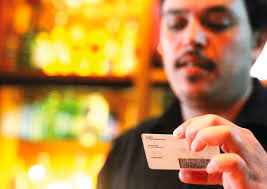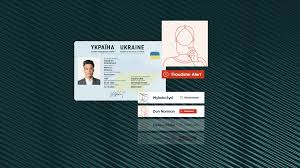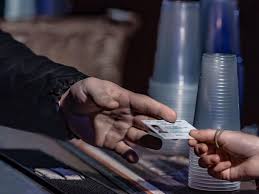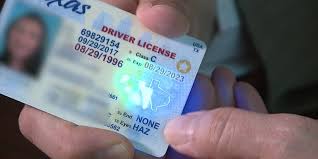Illinois fake ID
Introduction
In a society that places increasing emphasis on age verification, from purchasing alcohol to entering clubs or even applying for jobs, identification has become a cornerstone of modern life. Among the many types of IDs, one that has seen significant interest—often among younger people—is the Illinois fake ID. Fake IDs, particularly from Illinois, are known to be among the most sought after due to their sophisticated design and ease of access.
In this article, we will explore the phenomenon of fake IDs, particularly those originating from Illinois. This discussion will cover the reasons behind the demand, the potential legal consequences, the technology used in creating and detecting fake IDs, as well as the broader market trends and target audience that drives this illicit industry.
Section 1: Understanding Illinois Fake IDs
What is an Illinois Fake ID?
An Illinois fake ID is a counterfeit version of a legitimate Illinois driver’s license, often created to deceive businesses, law enforcement, and others who require identification verification. These IDs are typically used by individuals under the legal age of drinking or for other purposes such as gambling or bypassing age restrictions at entertainment venues.
The rise of Illinois fake IDs can be attributed to several factors, including the widespread demand for underage drinking, the state's relatively lenient appearance of IDs (compared to some other states), and advancements in counterfeiting technology.
How Fake IDs Are Made
The production of fake IDs has become increasingly sophisticated over the years. Modern counterfeiters use cutting-edge technology such as laser engraving, UV printing, and microtext to replicate the details found on a legitimate Illinois driver’s license.
Some of the common materials used in the making of fake IDs include:
- Polycarbonate Sheets: These sheets are a common feature of modern IDs and are known for their durability.
- Holograms and UV Ink: These are often used to replicate security features found on real IDs.
- Smartphone Apps: While most fake IDs are printed, some have incorporated digital elements that can be verified by smartphone scanners.
Despite these advancements, many counterfeit IDs still fail to meet the stringent security requirements that authorities use for verification, which makes detection possible for law enforcement and businesses with the right technology.
Section 2: Market Analysis of Fake IDs in Illinois
The Popularity of Fake IDs
The demand for fake IDs is particularly high in Illinois, given the state's large population, bustling nightlife, and university towns where younger people may seek to bypass age restrictions. Illinois’ ID, especially the driver’s license, is regarded as one of the easier IDs to counterfeit. This, coupled with the state’s status as a hub for technology and digital services, makes it a prime location for fake ID operations.
In cities like Chicago, which boast vibrant nightlife scenes, fake IDs are often used to gain entry to bars and clubs that restrict access to those under the age of 21. However, the use of fake IDs extends beyond nightlife. These IDs are also used in areas like:
- Alcohol Purchases: With a minimum legal drinking age of 21, many underage individuals rely on fake IDs to purchase alcohol.
- Job Applications: Some teens use fake IDs to apply for jobs that require age restrictions, especially in fields like retail or hospitality.
- Gambling: In some cases, individuals may use fake IDs to bypass age restrictions at casinos or sports betting locations.
Digital Age and the Market for Fake IDs
With the rise of the internet and social media, buying and selling fake IDs has become easier than ever. Online marketplaces and forums host vendors who specialize in producing fake IDs for various states, including Illinois. These vendors often advertise their services using encrypted communication methods, promising high-quality replicas of state-issued IDs.
The digital nature of the market has created both challenges and opportunities. On one hand, it allows more consumers to access fake IDs, and on the other hand, it provides law enforcement agencies with digital footprints to track illegal activities.
Section 3: Risks and Legal Consequences of Fake IDs
Legal Risks for the Consumer
Using a fake ID is illegal and comes with serious consequences. In Illinois, being caught with a fake ID can result in criminal charges that include:
- Felony Charges: If a fake ID is used with the intent to defraud or commit a crime, charges can be elevated to felonies, which carry severe penalties.
- Fines and Jail Time: Convictions for possessing or using a fake ID in Illinois can lead to hefty fines, probation, and even jail time, particularly if the person is caught attempting to buy alcohol or engage in illegal activities.
- Permanent Criminal Record: A conviction related to fake ID use can have long-lasting effects, potentially impacting employment opportunities and future legal standing.
Legal Risks for Sellers and Manufacturers of Fake IDs
The creation, sale, and distribution of fake IDs are federal offenses in the United States, and those who are involved in this black market industry can face even more severe penalties. The manufacture or sale of counterfeit IDs is a federal crime under the Identity Theft and Assumption Deterrence Act, which can result in:
- Federal Charges: Those involved in the production and distribution of fake IDs can be charged under federal law.
- Imprisonment: Convictions can result in years of imprisonment, with sentences depending on the severity of the offense.
- Financial Penalties: Sellers and manufacturers may also face significant fines, potentially reaching hundreds of thousands of dollars.
Impact on Businesses
Businesses that fail to properly screen IDs risk heavy fines, penalties, and a tarnished reputation. This is especially true for establishments that regularly encounter fake IDs, such as bars, nightclubs, and convenience stores. Many businesses have adopted ID scanning technology to combat this issue, and failure to comply with age verification requirements can result in severe financial and legal consequences.
Section 4: Target Audience of Fake ID Market
Young Adults and College Students
The primary demographic for Illinois fake IDs are young adults, particularly college students, who seek to bypass the legal drinking age. This group is often drawn to the perceived freedom that a fake ID provides, as it offers access to alcohol, clubs, and other adult privileges that would otherwise be out of reach.
The demand for fake IDs peaks around university towns like Champaign-Urbana, Evanston, and Chicago, where a large portion of the population is under 21 and eager to take part in the vibrant nightlife and social scene.
High School Students
Although less common, high school students are also part of the market for fake IDs. With some high school seniors approaching the age of 18, many will use fake IDs to attempt gaining access to venues or make alcohol purchases before they turn 21.
Tourists
Tourists visiting Illinois, particularly from other countries or states where they are of legal drinking age, may use a fake ID to gain access to age-restricted activities if they encounter difficulties with identification verification due to international or out-of-state IDs.
Section 5: How Authorities Detect Fake IDs
Technological Advancements in ID Scanning
As the market for fake IDs has grown, so too have the technologies designed to detect them. Businesses and law enforcement agencies employ a variety of methods to identify counterfeit IDs, such as:
- ID Scanners: These devices can verify whether an ID is genuine by scanning the barcode, magnetic stripe, and holograms.
- Hologram Detection: Fake IDs often fail to replicate the fine details of holograms that are embedded in authentic IDs.
- UV Light Testing: Many legitimate IDs contain UV ink that only becomes visible under ultraviolet light, a feature that is difficult to replicate on fake IDs.
Law Enforcement and Surveillance
Illinois law enforcement agencies use a combination of training programs, database checks, and surveillance technology to detect and prosecute fake ID operations. Digital evidence such as online transactions and shipping addresses also helps authorities track down fake ID vendors.
Conclusion
The world of Illinois fake IDs is a complex and ever-evolving phenomenon driven by the desire to bypass age restrictions, gain access to restricted activities, and exploit loopholes in the system. While fake IDs are widely available and accessible, the risks—both legal and personal—are substantial. As counterfeiting technology continues to advance, so too will the methods for detecting these IDs, creating a constant battle between illicit makers and law enforcement.
For those involved in this market, whether as buyers, sellers, or enforcers, understanding the risks and realities of Illinois fake IDs is crucial. Navigating this industry requires awareness of the legal, financial, and personal consequences that come with engaging in such activities. As the digital landscape grows, both consumers and businesses will need to stay vigilant to safeguard against the widespread impact of counterfeit IDs.
 Realistic Arizona Fake ID
Realistic Arizona Fake ID
 Fake ID safety
Fake ID safety
 Illinois fake ID
Illinois fake ID
 fake ID trends
fake ID trends
 Buy fake ID online
Buy fake ID online
 Online Fake ID Market
Online Fake ID Market
 fake ID safety
fake ID safety
 High-Quality Custom Fake ID Il
High-Quality Custom Fake ID Il
